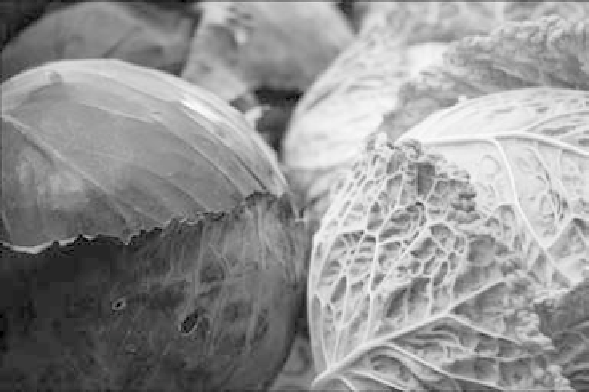Agriculture Reference
In-Depth Information
Stored properly, these winter squashes can last up to six months, just about the time the thin-
skinned summer squashes begin to ripen in the garden. Be sure to keep the stems intact on your
squash. If you cut them too close you'll make it easy for bacteria to get in and make the squash rot.
Cabbage.
This good fall crop can store well for several months. Harvest your cabbage for storage
as soon as the heads tighten up, and remove any loose leaves. Cut off the stem completely, and you
can wrap each in butcher paper. When they are wrapped, you can store them in a wooden box or
milk crate filled with straw, loose sand, or sawdust.
Cabbage stores best in tight heads like these.
(Photo courtesy of Tim Sackton)
Over the Garden Fence
Wash your stored fruits and vegetables before use, not before storage. Just shake off the loose dirt and
debris; washing them in water before storage can lessen the amount of time you get in storage. When you
bring the crops up to the kitchen to use them, that's the time you give them a thorough washing.
Constructing a Simple Root Cellar
Storage in a root cellar is simple, but it is only successful if you keep some conditions in mind. The
initial setup takes some forethought; from there it is easy to maintain and utilize.
All root cellars need just a few common elements to be successful. They should be dark. They
need to stay humid and cool. And they should be heavily insulated, the most common method of
















